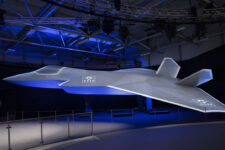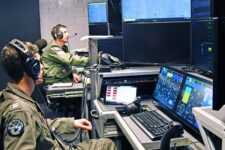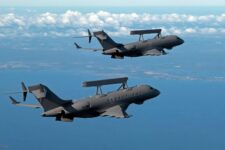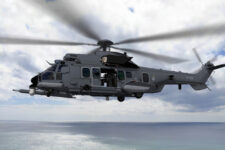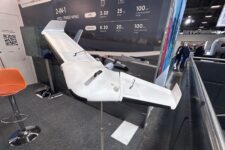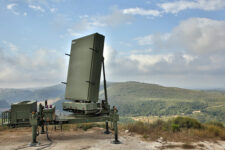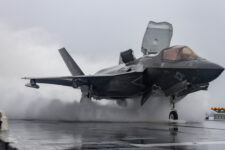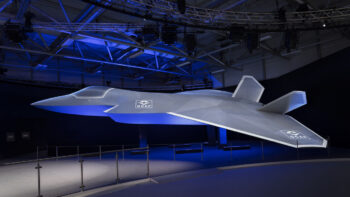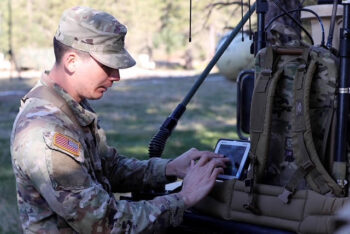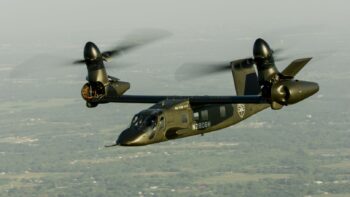
Norwegian soldiers patrol near the Russian border high above the Arctic Circle.
AFA 2020: The US Air Force is prepared to counter China in both space and, increasingly, in the Arctic as Beijing pursues ambitious plans in both domains. That was the pointed message from Air Force Secretary Barbara Barrett speaking here in Orlando today.
“As in space, America is resolute in protecting international norms in the Arctic … as Arctic sea routes gain importance,” she said.
In space, she cited both China’s 2007 anti-satellite (ASAT) weapons test, as well as its January 2019 “ominous historic lunar rover landing on the dark side of the Moon,” as evidence of threats the new Space Force is charged to counter.
China’s Chang’e-4 mission exploring the Moon’s far side was a first. In the minds of Beijing and many US allies, it was strictly a civil mission. Indeed, as reported by colleague Kenneth Chang yesterday, a team of Chinese and Italian researchers have just published an article in a scientific journal detailing the rover’s findings.
Nonetheless, many US national security leaders have suggested that the lunar exploration program is aimed at China establishing a permanent presence, with an underlying military mission, on the Moon.
As Breaking D readers know, senior Air Force and Space Force leaders have stepped up rhetoric in recent months about eventually expanding space operations to cislunar space. For example, DARPA’s 2021 budget documentation called the area of space between the Earth and the Moon the “new high-ground” that is “in danger of being defined by the adversary,” and doubled its 2020 request for a new cislunar rocket to $21 million.
At today’s Air Warfare Symposium here, Lt. Gen. David Thompson, vice commander of the Space Force, said that “someday” the Space Force mission will “extend to the Moon, to Mars, and beyond” — likely “within the 30-year plan.”
In the Arctic, Barrett pointed to the fact that China is linking the Arctic region to its “One Belt, One Road” global development strategy as evidence of its ambitions for expanding its influence north.
The Pentagon’s annual assessment of Chinese military strength released last year noted that China published its first Arctic strategy in 2018 promoting a Polar Silk Road. China has declared itself a near-Arctic State, and is operating more regularly in the Arctic in search of natural resources and new shipping routes.
Barrett said defense in the Arctic is a “central mission” for the Air Force, noting that civil airmen operate the Alaska Radar System monitoring for missiles flying over the poles as “the first line of defense” in the region. The goal of Air Force operations there, she said, is to ensure “a free and accessible Arctic” that can be of “benefit to all.”
She stressed that the US efforts in the Arctic must be undertaken hand-in-hand with regional allies. For that reason, she explained, the Air Force is working to maintain strong relationships with Arctic nations Canada, Denmark, Finland, Iceland and Sweden.
UK ‘needs’ GCAP future fighter to counter growth of Russian and Chinese stealth jets: Air Chief
The joint British, Italian and Japanese effort has been the subject of uncertainty in recent months after UK Armed Forces Minister Luke Pollard refused to make a long term commitment to it on grounds that doing so could “prejudge” the outcome of a new strategic defense review, set to report in mid-2025.
